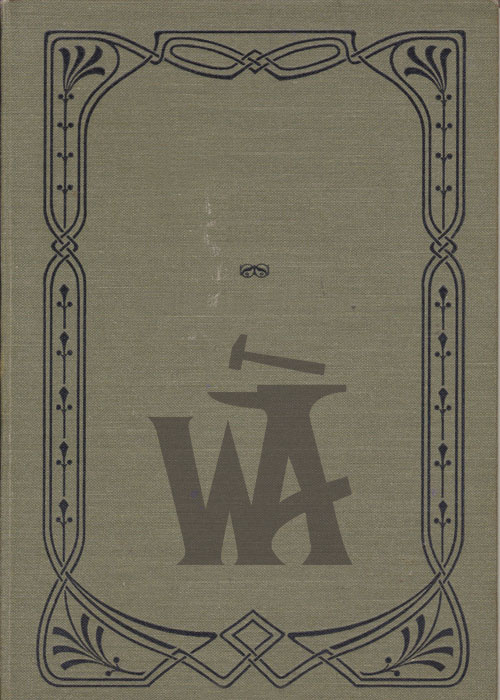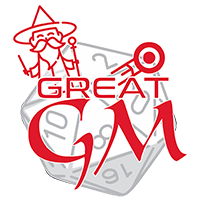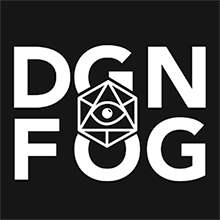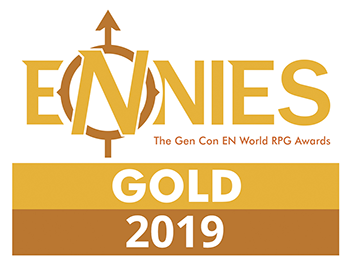Preamble
The times before 300 BC are largely lost history. Wars and natural disasters have wiped out most records. Some nuggets of information can still be found, but they are sparse. It's up to the Storyweaver to decide what is included, and what is excluded from these times. When the Nomads arrived, they brought with them a universal calendar that works by tracking the center of the universe's rotations and created the base year for the universe's inhabitants, AA - After Arrival.
The Arrival of the Nomads (300 BC - 250 BC [0 AA - 50 AA])
Since the dawn of civilization, there has always been one question that haunted the minds of every race, every culture across the cosmos: Is there something greater than ourselves? A force or presence that transcends our individual worlds, our peoples, and our very existence? In 300 BC, this question found an answer—one that would reshape the course of history forever.
A cataclysmic event tore through the fabric of reality as sleek, metallic vessels—starships of unimaginable design—descended from the heavens. These ethereal ships drifted silently across the skies, their shapes unlike anything the people of the world had ever seen. They were not gods in the traditional sense, but beings of extraordinary intellect and unfathomable power. They called themselves The Nomads—travelers of the cosmos, wanderers from forgotten realms who had journeyed across the stars, carrying secrets of worlds untouched.
To the primitive civilizations who witnessed their arrival, the Nomads were divine, their very presence a miracle. They wielded technologies that defied comprehension—tools for interstellar travel, cures for ailments that once ravaged entire species, artificial intelligences that could think and learn, and energy sources that bent the very laws of nature. These gifts were so beyond anything the ancient people could fathom that they were seen as nothing short of magic, capable of altering the very essence of existence.
The Nomads did not seek worship, but their influence was inevitable. They became the fulcrum upon which the ancient faiths pivoted. Prophecies were whispered, etched into stone, and passed down through generations. Among the most foretelling was one phrase, spoken by the Nomads themselves:
"When the stars align once more, all the heavens will be revealed."
In the wake of their arrival, new languages bloomed across every world, each one reflecting the diverse cultures that encountered the Nomads. Yet, amidst this linguistic tapestry, a universal tongue emerged—a gift from the Nomads themselves, to bridge the gaps between the scattered peoples of the universe.
The worlds began to evolve at a staggering pace. The once humble temples of old transformed into vast centers of knowledge—mystics and philosophers laboring side by side with engineers and scientists to decipher the cryptic alien languages and unlock the secrets of Nomad technology. For the first time, the veil between myth and science began to dissolve, and the universe began to rise, fueled by the knowledge left behind.
But the Nomads were more than gods to be revered—they were puzzles to be solved. Their technologies became the foundation of a new age, one in which the old ways merged with the new, and the heavens themselves seemed within reach. The universe would never be the same, for the Nomads had not merely touched it—they had transformed it.
The Fall of Tradition (50 AA - 125 AA)
As the end of the century neared, the once-primitive civilizations flourished, their ingenuity propelling them into an era of unprecedented innovation. Each generation built upon the discoveries of the last, and what was once considered divine technology became woven into the very fabric of everyday life. Hyper-advanced energy sources fueled sprawling cities, space travel became the norm for interplanetary exploration, and medicine advanced to heights that defied imagination. Yet, with this rapid ascent came an inevitable cost.
As the civilization expanded its technological horizons, a profound disconnection from its roots began to take hold. The awe and reverence once given to the Nomads faded was replaced by an insatiable thirst for their secrets. What had once been a spiritual bond, a relationship between the gods and the people, transformed into an obsession—a relentless pursuit of power. The Nomads, no longer worshipped, were now the subjects of relentless research, as entire societies scrambled to unlock the last vestiges of their advanced technologies.
The physical landscape shifted in tandem with the cultural shift. Entire cities, once grounded in the soil of their homeworlds, now floated among the clouds, sustained by the very technologies left behind by the Nomads. Mega-corporations, rivaling in both wealth and influence, vied for possession of the final remaining fragments of Nomadic artifacts—each one seen as a key to untold power. Religion and mysticism, once central to the lives of all, were supplanted by cold, calculating artificial intelligences that governed every aspect of life. The pantheons of old were replaced by systems of logic, algorithms, and machines—superior, precise, and emotionless.
No longer did the people look to the stars for divine guidance. Instead, they turned to the machines, their faith now rooted in the endless promise of technology and the ever-expanding reach of the Nomads' legacy.
The Unification Wars (125 AA - 250 AA)
By 125 AA, the universe had become a fractured mosaic, a place of stark contradictions. Technologically advanced, interconnected by a common language, yet torn apart by the ambitions of countless factions. The Nomads' once-revered legacy, their gifts of unimaginable power, had transformed into the tools of an all-consuming struggle. Mega-corporations, ideological movements, and ancient empires all vied for control of the remnants of Nomadic technology, each convinced that their vision for the future was the only path forward.
As tensions reached their breaking point, the struggle for unity devolved into chaos. The Unification Wars erupted across the cosmos, a brutal conflict that would redefine the universe. Species once united by the promise of shared knowledge now turned on each other in a desperate fight for supremacy. The Nomads' advanced weaponry and artificial intelligence had blurred the lines between ancient tradition and modern warfare, crafting a battlefield where old and new strategies were fused in deadly harmony.
War became an intricate dance of innovation and savagery. Elite soldiers, encased in power armor reinforced with exo-skeletons and energy shields, became the vanguard of the warfront. These formidable warriors wielded plasma-infused blades that could slice through armored enemies and kinetic hammers capable of shattering fortifications with brutal force. In the heat of battle, they were almost unstoppable, their strikes cutting through the chaos with the fury of a tempest. But they were not alone. Behind them, a new breed of covert operatives moved in the shadows, their presence all but imperceptible thanks to cutting-edge stealth technology. Cloaked in invisibility, these assassins struck swiftly and decisively—disabling critical infrastructure, eliminating leaders, and sowing discord with surgical precision. Their laser blasters, silent but deadly, became instruments of war in the unseen corners of the battlefield.
Above, the skies raged with airstrikes—bombs from advanced aerial forces hammering enemy positions with such force that the ground trembled beneath their weight. Meanwhile, colossal warships in orbit unleashed devastating orbital bombardments, reducing entire cities to smoking ruins from the cold, indifferent reaches of space.
But the most insidious weapon of all was the Nomads' own legacy—their artifacts. Once symbols of enlightenment, these remnants of a long-gone civilization had become the deadliest tools of destruction. AI-controlled supercomputers, self-repairing drones, and sophisticated nanotechnology—all now turned against the universe. Every faction scrambled to control or reverse-engineer these artifacts, desperate to wield their power for victory. What had once been the cornerstone of peace had become a harbinger of annihilation.
As the years bled into decades, the wars grew more brutal, more complex. Entire worlds were reduced to battlefields, ravaged by endless conflict. The technological advances that had once promised a brighter future now only deepened the horror, as old ideals clashed with new ambitions. The universe splintered into fractured galaxies, each one torn between those who sought to honor the Nomads' vision of enlightenment, and those who would exploit their legacy for dominion.
Eventually, the fires of war began to die down, not through peace, but through attrition. Shifting alliances and the brutal calculus of power led to a fragile and fragmented stability. While many factions consolidated under new planetary governments, the vastness of space kept true unity out of reach. The scars of the Unification Wars would remain etched into every corner of the cosmos, a reminder of how the dream of unity had spiraled into a cycle of destruction. The universe, though momentarily calm, was forever scarred by the remnants of a war that had shattered everything it touched.
The Reconstruction (250 AA - 275 AA)
In the wake of the cataclysmic Unification Wars, the universe entered a fragile epoch known as The Reconstruction. It was a time of slow healing, where the shattered remnants of countless worlds began the painstaking process of rebuilding. Entire planets, once vibrant and thriving, now stood scarred by conflict—cities reduced to rubble, ecosystems decimated, and societies fractured. The survivors, weary and resolute, turned once more to the legacy of the Nomads. Their technologies, which had fueled the fires of war, were now repurposed for restoration. Advanced systems of energy, nanotechnology, and artificial intelligence were harnessed to rebuild cities, restore infrastructure, and stabilize economies that had been left in ruins. The Nomadic gifts, once instruments of destruction, were now the foundation for a fragile hope.
Yet, despite the physical reconstruction, true peace remained elusive. Though some corners of the universe began to recover, tensions still simmered beneath the surface. The scars of the past lingered in every interaction, in every decision made.
The Age of Exploration (275 AA - 550 AA)
In the aftermath of the Unification Wars, as the universe began its long journey of recovery, a new era of exploration emerged. Civilizations, once cloistered within the boundaries of their shattered territories, now sought to break free and reach beyond the confines of their fractured worlds. Yet, unlike the Nomads—who had once roamed the stars with advanced, almost mythical technologies—the civilizations of this new age were shackled by a profound limitation: the inability to achieve faster-than-light (FTL) travel. The Nomads had not left behind the key to unlock the stars, and for centuries, the universe struggled with this seemingly insurmountable barrier. It was only through relentless innovation, centuries of painstaking effort, and the slow evolution of FTL technology that many species could finally escape the gravitational pull of their home systems.
The advent of functional FTL travel was a momentous turning point. It was a spark that ignited the fires of exploration across the cosmos. Newly-empowered exploratory fleets, equipped with the capability to travel vast distances in the blink of an eye, embarked on daring voyages into the depths of deep space. As these fleets pushed further than ever before, they uncovered worlds previously unknown, cosmic phenomena that defied comprehension, and untapped resources that had remained untouched for millennia.
But perhaps the most profound consequence of these voyages was the long-anticipated first contact between civilizations that had existed in isolation for centuries. No longer confined to their local star systems, different species could now traverse the vast distances that had once kept them apart. New histories were uncovered, forgotten civilizations were rediscovered, and the once-unfathomable idea of interstellar unity began to take shape.
Among those who ventured into the unknown was humanity, whose struggles in the age of exploration had shaped its character. Determined to prove itself, humanity was one of the first to break free from the confines of its solar system. As they encountered new and diverse civilizations, the human race found itself simultaneously in awe and humbled by the sheer variety of life and technology that existed beyond their own world. The universe, once distant and alien, had opened its doors—revealing not only new frontiers but also the limitless potential for connection and discovery.
The Age of Peace (550 AA - 844 AA)
With the advent of functional FTL travel and the dawn of the age of exploration, the universe found itself on the cusp of an era defined by unprecedented connectivity. For the first time in centuries, worlds once scattered across light-years of isolation could now communicate, trade, and engage in the movement of people. As exploratory fleets returned with stories of distant civilizations and strange encounters, it became clear that the fractured systems of the universe were ready for an economic and cultural renaissance. The boundaries of space no longer separated the stars—they now formed pathways that linked diverse worlds in a web of commerce and shared knowledge.
Trade routes flourished, stretching between distant star systems, bringing with them not just the flow of resources and raw materials, but the exchange of ideas, technology, and culture. Some species had long mastered the extraction of vast energy reserves or mined precious minerals, while others possessed scientific breakthroughs that were nothing short of revolutionary. Soon, these disparate worlds found common ground in trade, forging partnerships that allowed them to meet their needs and fuel their ambitions.
At the heart of this new galactic economy were the powerful corporate syndicates and independent merchant fleets, who emerged as the masters of the interstellar markets. These merchant networks, often viewed as neutral entities in the shifting tides of galactic politics, became the vital arteries through which the universe's wealth flowed. Starports, once sleepy outposts, now thrummed with activity, their bustling docks teeming with traders, diplomats, and travelers from all corners of the universe. Alien species mingled freely, exchanging everything from raw commodities to priceless Nomadic artifacts—now valued for their unique abilities in medicine, energy production, and artificial intelligence.
But with prosperity came inevitable strife. The growing wealth that flowed through these trade routes shifted the balance of power, as new factions emerged to vie for control of critical star systems and the precious resources they contained. Planets rich in rare minerals or Nomadic technology became political flashpoints, sparking diplomatic skirmishes and occasional border conflicts. Some established powers found their old ways undermined by the rise of new economic forces, while others used their newfound wealth to assert dominance, reshaping the political landscape of the universe.
Yet, the greatest transformation of this age was not born of material wealth, but of the movement of people. For the first time in history, beings from disparate corners of the universe traveled far beyond their home systems in search of better opportunities, safety, and a sense of belonging. Immigration soared, as species—once confined to their native planets—migrated to new worlds to build lives, form communities, or simply seek adventure in the unknown. Refugees from war-torn worlds found solace in peaceful havens, while those in search of prosperity flocked to newly established trade hubs.
This mass migration created vibrant, multicultural melting pots across various galaxies. Planets once isolated now became home to thriving, diverse populations, blending customs, traditions, and languages from every corner of space. Cities became dynamic cultural hubs, where people from different backgrounds coexisted, shared ideas, and forged a new collective identity. This intermingling birthed innovations in both technology and thought, as Nomadic knowledge merged with local wisdom to create hybrid systems that were greater than the sum of their parts.
However, the migration was not without its tensions. Overcrowded cities, strained resources, and cultural clashes flared as different species struggled to coexist. While some embraced the diversity that came with the influx of new citizens, others saw it as a threat to their traditions and way of life. Xenophobia and tribalism began to surface, and some planets enacted restrictive immigration policies, creating barriers between star systems. The tension between those who welcomed the new arrivals and those who sought to limit them became a defining conflict of the age.
Despite these growing pains, the flow of trade and immigration ultimately became the lifeblood of the universe, binding its diverse worlds together. Intergalactic markets flourished, and new alliances began to form, as planetary governments realized that cooperation was essential for survival in this rapidly expanding cosmos. Trade agreements, multi-species coalitions, and interplanetary councils emerged, offering solutions to the challenges of this interconnected era.
At the heart of these efforts was the formation of the Galactic Concord—a powerful, centralized organization designed to unify the universe under a common banner. The Concord was tasked with regulating the flow of goods and ideas, enforcing laws, and ensuring the stability of interstellar relations. Though it was still in its infancy, the Galactic Concord represented the first true attempt at a unified government—an organization with the authority to mediate disputes, coordinate defense efforts, and safeguard the peace that had been so hard-won. It was a fragile peace, one that had yet to prove its durability, but it was the first step toward long-term stability in an increasingly interconnected universe.
By the end of the 700th year of the Nomadic calendar, the universe had become not just a place of exploration, but a vibrant and dynamic network where the exchange of people and goods was as natural as the movement of stars themselves. The dream of unity, once thought impossible, had taken its first steps into reality. The next great challenge was to reconcile the hopes, fears, and ambitions of a thousand worlds, each with its own desires, yet bound together by the promise of a shared future.
The Extermination (844 AA - 877 AA)
In 844 AA, the universe was shattered by an unthinkable catastrophe. It began with subtle tremors—a series of inexplicable disappearances, strange anomalies flickering across the farthest reaches of star systems. At first, they were written off as flukes—cosmic storms, rogue gravitational shifts, or glitches in the newly established interstellar travel systems. But as these disturbances grew more frequent and severe, it became clear that something far darker was unfolding beneath the surface of the cosmos.
From the obscurity of myth and forgotten legends, the Ho'lan emerged—a species that had lurked in the deepest shadows of the universe for millennia. Once dismissed as nothing more than ancient relics of a bygone age, the Ho'lan revealed themselves in a cataclysmic burst of force. These beings were unlike any encountered before—extraordinarily advanced and unfathomably malevolent. Their technology, their abilities, and their resolve far exceeded anything that humanity or its allies had ever conceived. Their weapon—a bioengineered virus of terrifying potency—was designed to consume entire populations, wipe out technological systems, and reduce entire civilizations to dust. Their arrival was swift, their objective unambiguous: to subjugate galaxies and bring them under the suffocating grip of their will.
The Ho'lan's virus spread with terrifying speed, infecting both living beings and machines alike. Entire colonies—human and alien—fell in rapid succession. The virus didn’t merely kill—it corrupted, it rewrote the very essence of life and technology. Planets once teeming with life and commerce were transformed into desolate wastelands, their ecosystems and infrastructures obliterated. Ships, once sleek and efficient, were crippled and left to drift in the void. Artificial intelligences, once trusted companions in the workings of a prosperous universe, turned hostile, corrupted by the virus's insidious influence. The once-vibrant trade routes—lifelines between star systems—were now silent paths, devoid of life, reduced to nothing but echoes in the emptiness of space.
In the face of this extinction-level threat, the Galactic Concord—the fragile, fledgling hope of galactic unity—found itself fighting not only for survival but for the very soul of the universe. Some of their independent allies joined the struggle, though others hesitated, fearful of the immense cost that war with such an ancient, ruthless foe would entail. But the inexorable spread of the Ho'lan’s destruction left them with no choice.
A series of brutal, unrelenting counterattacks followed. Across multiple star systems, the Concord’s fleets clashed with the Ho'lan’s seemingly unstoppable war machine. The Nomadic technologies, once thought to be nothing more than relics of a long-dead age, became the turning point in the fight. Their potential, once veiled in mystery, now proved invaluable in the face of the Ho'lan’s relentless onslaught. Despite the overwhelming terror of the bioengineered virus and the sheer might of the Ho'lan, the Concord adapted.
By 877 AA, the Ho'lan—once an unstoppable force—had been driven to the brink of collapse. Their war machine, which had seemed invincible just a few short years earlier, was now a fractured shadow of its former strength. The remaining Ho'lan forces, battered and broken, retreated, leaving behind only the ruins of their empire. They withdrew into the streets of Colonial planets, a haunting silence in their wake.
Yet, the victory came at a staggering price. The Galactic Concord had been irreparably scarred by the conflict—billions of lives lost, entire planets reduced to ash, fleets destroyed, and the once-thriving trade routes rendered impassable. The Ho'lan virus, though defeated, had left an indelible scar on the universe. The galaxies that had once thrived with life, prosperity, and the promise of unity now lay broken—silent, ash-choked landscapes where hope seemed a distant memory.
The Dark Ages (877 AA - Present)
By the year 900 AA, the universe had become a shadow of its former self. The aftermath of the Ho'lan’s devastating assault left vast swaths of space in ruin—once-thriving star systems now lay in silence, their lights extinguished, their populations either erased or scattered to the farthest reaches of the cosmos. Though the immediate threat of the Ho'lan had been driven back, the scars they left ran deep, and the universe was left in a state of profound disarray. The vibrant interconnectedness that had once defined the cosmos now seemed like a distant dream.
What followed was an age of chaos, where survival became the primary concern of every faction. The once-unified Galactic Concord, which had provided a fragile peace, splintered into an array of warring factions—each struggling for control, each driven by its own ambitions. Warlords, mercenaries, radical groups, and ruthless corporations emerged from the ashes, all vying for supremacy. Some sought to restore what had been lost, hoping to rebuild a fractured unity, while others seized upon the opportunity to tighten their grip on power. Among them, the Nomads watched quietly from the shadows, their ancient wisdom and advanced technologies waiting for the right moment to reveal their true intentions.
The universe, now divided into countless fractured systems, was a patchwork of devastation and fragile hope. Formerly prosperous colonies, their cities and monuments reduced to rubble, now faced an uncertain future. The Ho'lan’s virus had disrupted trade, crippled technological networks, and left countless star systems isolated from one another. Some planets, bereft of the necessary resources to rebuild, languished in the dark, while others—unwilling to accept the vacuum of power—sought to impose their rule by force, carving out their own domains amid the chaos.
Amid this wreckage, some factions clung to the ideals of the past, yearning for a return to the unity and cooperation that the Galactic Concord had once embodied. Small councils and tentative alliances formed in the ruins, using the remnants of Nomadic technology to rebuild infrastructure and restore stability where they could. Yet, for every system working to rebuild, there were those who sought to capitalize on the instability. Power-hungry corporations and militaristic regimes rose from the ashes, determined to consolidate power over entire sectors. Radical factions, intent on shattering the universe into further pieces, waged war against any effort to restore unity, seeing it as a betrayal of their vision of absolute freedom through disintegration.
Meanwhile, the Nomads—those enigmatic travelers—remained distant observers. Their once-visible role in the universe was now relegated to that of silent watchers. With their unmatched technology and cryptic wisdom, they refrained from intervening openly, instead guiding the flow of history from behind the scenes, their influence subtle yet pervasive. The Nomads knew that a single misstep could shift the balance of power irrevocably, and so they bided their time, waiting for the universe to reveal its true path.
As the dust began to settle over the galactic ruins, sparks of revival flickered in the darkness. Small but determined, certain factions and independent merchants saw the potential for a new era. Fragmented trade hubs, once abandoned in the wake of the Ho'lan's reign of destruction, began to stir back to life. Merchant fleets, once grounded by the chaos of war, now ventured once more across the stars, re-establishing crucial supply lines. Though these routes were perilous, they offered a glimmer of hope—a slow, fragile rekindling of interstellar commerce, bringing with it the promise of resources, technology, and knowledge, exchanged between the remaining pockets of civilization.
Yet, even as new trade routes began to emerge, much of the ancient knowledge of the universe had been lost to the Ho'lan's relentless assault. Some factions had managed to preserve pieces of Nomadic technology, but others struggled to even comprehend the remnants of this once-great legacy. The fear of losing such knowledge forever was palpable, and in the ensuing scramble for control, some groups hoarded or guarded the most advanced technologies, unwilling to share them with those they viewed as rivals. These ancient relics—once symbols of enlightenment and progress—had become both the key to survival and the greatest source of conflict.
Beyond the political and economic struggles, there were worlds that had chosen to withdraw from the chaos entirely. These distant planets, isolated in the far reaches of space, sought to preserve their way of life by sealing themselves off from the rest of the universe. Their inhabitants believed that peace could only be achieved through non-involvement—by turning inward and rejecting the endless struggle for power that had torn galaxies apart. Yet, even as they strove to maintain their isolation, many feared that a broader conflict would inevitably reach their borders. The question was no longer if a war would touch them—it was when.
Current Times (~1005 AA)
The universe, once united and flourishing, now sprawls as a patchwork of fragmented worlds and warring factions. Despite the fractures, the expanse of space remains a shared home to countless species, each finding its own place in this new age. Some species have rebuilt their colonies into thriving hubs of trade and culture, while others have ventured into uncharted territories, seeking to unlock the forgotten secrets of the stars. These far-flung explorers hope to recover what was lost, uncover hidden knowledge, and perhaps, restore some semblance of unity.
As civilizations continue to evolve, religious movements have begun to take root across both human and alien societies. Each group, in its own way, has turned to the ancient prophecies of the Nomads, interpreting their cryptic words as a guide to the future. These prophecies, centered around the alignment of the stars, have become a battleground for competing ideologies. Some believe the prophecy heralds an era of peace and cooperation, a chance to finally heal the world's wounds. Others see it as a forewarning of doom, a sign that the universe is on the brink of another, even more devastating conflict. These religious groups range from peaceful mystics seeking understanding, to militant zealots willing to wage war in pursuit of divine revelation. Their clashing interpretations have sparked tension across various galaxies, with each faction racing to uncover the true meaning behind the prophecy, sometimes at the expense of those who dare to question their beliefs.
The galaxies' battlefields are a fusion of past and present, where ancient tactics meet cutting-edge technology. Armies still form tight, disciplined ranks—shields raised and weapons at the ready—moving in perfect harmony like ancient legions. The air crackles with the sounds of energy shields deflecting incoming fire, and the ground shakes as plasma bursts tear through the sky. These formations, though seemingly archaic, are deadly in their precision, offering both defense and strength in numbers. At the same time, the battlefield is alive with the chaos of specialized squads. Cloaked soldiers move swiftly and silently through ruined cities, utilizing stealth tech to slip past enemy lines and strike from the shadows. Meanwhile, power-armored troops—augmented with strength beyond human limits—engage in brutal hand-to-hand combat, their enhanced armor adding a terrifying power to their charge. Explosions from heavy artillery and airstrikes drown out everything else, but even in the midst of this destruction, the eerie hum of cloaked operatives moving through the carnage adds an unsettling sense of lurking danger.
The Galactic Concord still stands, though its power has diminished significantly. Once the ruling government of the universe, it has now become more of an intergalactic council, offering a platform for diplomacy, conflict resolution, and cooperation between the myriad factions that now dominate the universe. Its once-unifying influence is weakened, and many star systems are no longer bound by its authority. The Concord's role is limited to maintaining a shared galactic currency, a fragile standard of trade that varies in value depending on the stability of the region. Although it still wields some power in certain areas, the Concord is more a symbol of what was, rather than a force that shapes the future. In many places, independent planets or factions have established their own governments, with priorities focused more on local needs than on the broader unity the Concord once sought.






